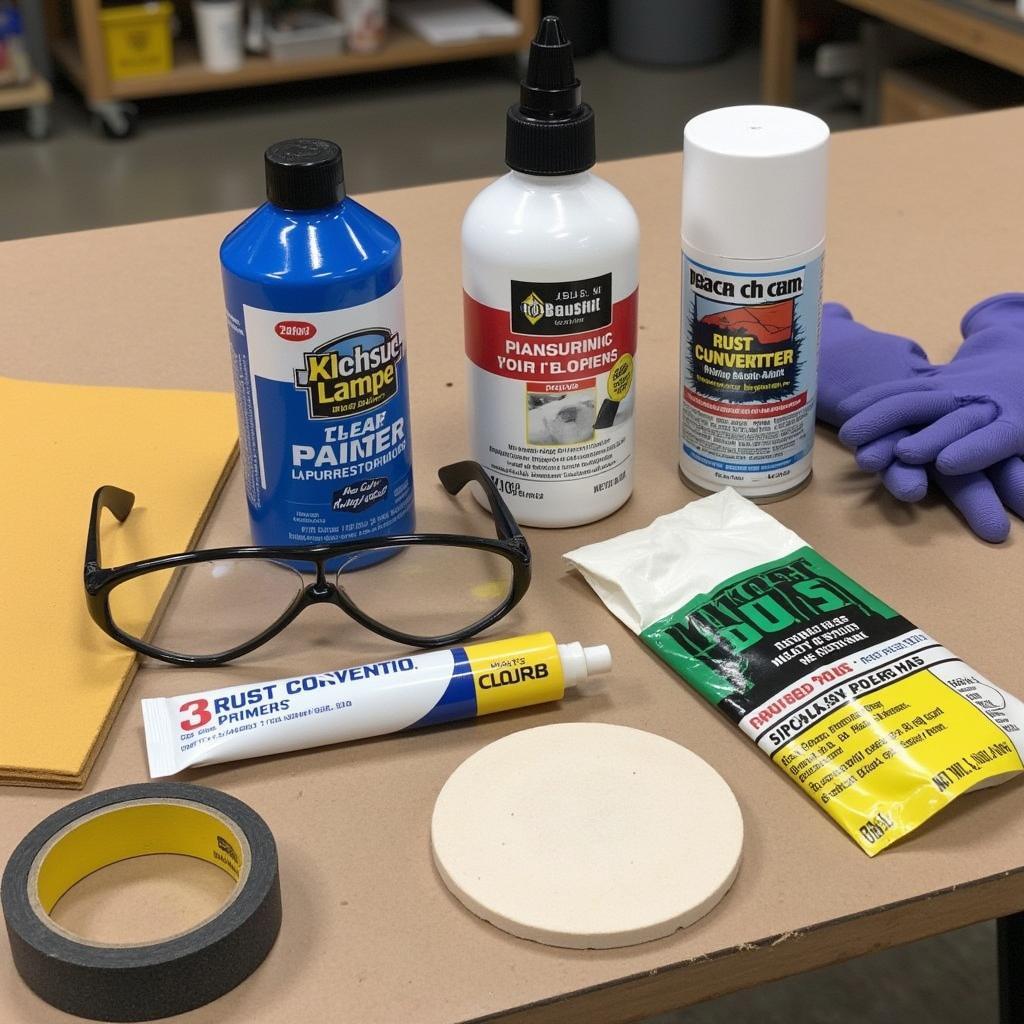Rust on a car door is a common problem that can quickly escalate from a minor cosmetic issue to a major structural concern. This guide provides a step-by-step approach to Fixing Rust On A Car Door, offering solutions for DIY enthusiasts and professionals alike. We’ll cover everything from identifying the extent of the damage to preventing future rust formation. fix door scratch on car helps with minor scratches before they turn into rust spots.
Assessing the Rust Damage
Before you start fixing rust on a car door, you need to determine the severity of the damage. Surface rust, often appearing as small bubbles or discoloration, is relatively easy to treat. However, if the rust has penetrated deeper, creating holes or weakening the metal, more extensive repairs are necessary.
A thorough inspection, including checking both the inner and outer surfaces of the door, is crucial. Use a screwdriver to gently probe suspected areas. If the metal feels soft or crumbly, it indicates significant rust damage.
 Assessing Rust Damage on a Car Door
Assessing Rust Damage on a Car Door
Gathering Your Tools and Materials
Having the right tools and materials on hand is essential for a successful rust repair. You’ll need:
- Sandpaper (various grits)
- Rust converter
- Primer
- Automotive paint (matching your car’s color)
- Clear coat
- Masking tape and paper
- Safety glasses and gloves
- Body filler (if needed)
- Sanding block
Consider using a high-quality rust converter that chemically transforms rust into a stable, paintable surface. This will prevent the rust from returning beneath the new paint.
 Tools and Materials for Fixing Car Door Rust
Tools and Materials for Fixing Car Door Rust
Step-by-Step Rust Repair Process
- Prepare the area: Clean the rusted area thoroughly with soap and water. Remove any loose rust flakes with a wire brush or sandpaper. Mask off the surrounding areas to protect them from overspray.
- Sand the rust: Start with coarser grit sandpaper to remove the bulk of the rust and then gradually move to finer grits to smooth the surface. If you’re dealing with deeper rust, you may need to use a grinder with a wire wheel attachment. how to fix ding on car door offers helpful tips for addressing minor dents that might accompany rust.
- Apply rust converter: Follow the manufacturer’s instructions carefully. Allow the converter to dry completely.
- Apply body filler (if necessary): If the rust has created a hole or significant indentation, apply body filler to build up the surface. Sand smooth once dry.
- Prime the area: Apply several thin coats of automotive primer, allowing each coat to dry before applying the next.
- Paint and clear coat: Apply several thin coats of automotive paint that matches your car’s color, followed by a clear coat for protection and shine. how much to fix big dent in car door can give you an idea of professional repair costs if the rust damage is extensive.
Preventing Future Rust
Preventing rust is always better than fixing it. Regularly washing and waxing your car can help protect the paint and prevent rust formation. Keeping your car in a garage or covered parking area can also minimize exposure to the elements. ca how to fix a dent in a car helps you address those dents which can lead to rust if not repaired.
“Regular maintenance is key to preventing rust,” says John Miller, an automotive expert with over 20 years of experience. “A simple wash and wax can go a long way in protecting your car’s finish.”
Conclusion
Fixing rust on a car door requires patience and attention to detail. By following the steps outlined in this guide, you can effectively address rust issues and restore your car door to its former glory. Remember, early intervention is key, so address rust as soon as you notice it. car window won’t stay up temporary fix may seem unrelated but maintaining all aspects of your car, including windows, contributes to overall vehicle health. For further assistance or inquiries, don’t hesitate to contact AutoTipPro at +1 (641) 206-8880 or visit our office at 500 N St Mary’s St, San Antonio, TX 78205, United States.






Leave a Reply